The rose-breasted cockatoo, best known by its native aboriginal Australian name "galah," is the perfect parrot species for a pet owner who likes to interact frequently with a pet bird. Extremely intelligent and enormously fond of humans, this pretty pink bird can readily learn to say many words and do complicated tricks with regular training. This hardy bird can live in some of the more extreme areas of Australia.
Species Overview
Common Names: Rose-breasted cockatoo, galah, galah cockatoo, pink and gray cockatoo, crimson-breasted cockatoo, roseate cockatoo, galah parrot
Scientific Name: Eolophus roseicapillus with three subspecies with slight color and size variations from different regions in Australia: Eolophus roseicapillus albicepts (southeastern), E. r. roseicapilla (western), and E. r. khuli (northern)
Adult Size: 12 to 15 inches in length, weighing 10 to 14 ounces
Life Expectancy: Can live to 70 years in captivity; most commonly will live 40 or so years
Origin and History
The galah is native to Australia, where it can be found in open grasslands and over much of the country. It has also been self-established in Tasmania. Galah cockatoos travel in large flocks, often in groups that also include sulfur-crested cockatoos. They will mate with other species of cockatoos.
Galahs are a familiar sight in urban areas. These birds tend to be more prevalent in settled areas because they eat cultivated crops and make use of artificial ponds and livestock watering troughs. Many farmers regard the birds as pests.
The name "galah" means "fool" or "clown" in the native Australian language Yuwaalaraay. This highly intelligent bird got the name for being a loud nuisance. The term "galah" is a slang, derogatory word in Australia that means a "loud-mouthed idiot."
Temperament
Affectionate and friendly, the galah cockatoo has a reputation for being a loving pet. Unlike umbrella cockatoos, these birds are not big on cuddling. But, they are accustomed to being handled.
If you are interested in owning a galah, make sure that you have plenty of free time to spend with your pet. It is a sensitive bird, requiring a lot of attention and interaction from its owners. As a flock-dwelling bird by nature, if its adopted human flockmate ignores it, the rose-breasted cockatoo can become depressed, angry, and destructive.
Speech and Vocalizations
Wild galahs emit loud, high-pitched sounds while flying in flocks. They can make a resonating screech when frightened, excited, or calling out for attention. This clever bird can imitate people's voices and repetitive sounds like train whistles, car horns, or telephone ringtones. Some say males are more prolific talkers than females.
Comparatively, the galah cockatoo is not particularly loud for a cockatoo, which is among the loudest of parrots. Still, this bird is not recommended for apartment or condo living. It usually has two noisy periods, once upon waking with the sun and at dusk.
Galah Cockatoo Colors and Markings
Their bold colors and friendly personalities have made galah cockatoos increasingly popular as pets. As its descriptive name suggests, rose-breasted cockatoos have bright pink feathers on their chests, bellies, and the lower half of their faces. They have pinkish-white crests and gray backs, wings, and tail feathers, gray feet, and horn-colored beaks. As is true of all cockatoos, the galah has a head crest that fans out when the bird is frightened or excited.
The easiest way to attempt to determine the sex of a galah is to look at its eyes. Males have a darker, almost brown iris (area of the eye that surrounds the pupil) while females have a lighter, pink iris. Anecdotally, males may talk more, and females tend to sit on a perch with their legs farther apart.
Caring for a Galah Cockatoo
Your bird will want to spend a considerable amount of time with you and will be a reasonably high-maintenance pet. If you are short on time for interaction, this bird might be happier housed with another galah.
These parrots need sound sleep in a dark, quiet place that mimics the safety of the roosting areas that they prefer when living in the wild. Covering the bird's cage at night usually reassures them.
This bird is not a large parrot but still requires plenty of space. At the very least, it needs a 5-foot-square cage.
Common Health Problems
Galahs seem to be less prone to avian diseases than other cockatoos. However, they are just as susceptible to nutritional disorders as other parrots and cockatoos. Some of the most common conditions include fatty liver disease, lipomas (fatty tumors), psittacine beak and feather disease (PBFD), feather-picking, and other forms of self-mutilation (if they feel neglected).
By far, the most common problem with galah cockatoos is obesity. This is nearly always caused by too little activity, combined with a diet that has too many calories. With sufficient exercise and a balanced diet, your galah should remain at a healthy weight.
Diet and Nutrition
In the wild, galahs eat grasses, leaf buds, flowers, seeds, and on occasion, insects for extra protein.
When kept as pets, feed galahs a balanced diet. High-quality formulated pellets have been developed to meet all your bird's nutritional needs. At least 50% of your bird's diet should be in pellet form. The other half of their diet should be fruits and vegetables. Start by feeding 1/4 cup of pellets and 1/4 cup of fresh salad daily. Incrementally increase as needed.
Great choices for fresh vegetables include leafy greens such as Swiss chard, kale, Chinese cabbage, and romaine; root vegetables; peppers; zucchini; green beans; and sprouts. They love most fruits and berries. Give walnuts, almonds, and pecans sparingly as training treats. Fresh water should be available at all times.
Exercise
Galah cockatoos are active birds, and they need plenty of exercise to maintain their physical health. Plan on giving this bird at least three to four hours of active time outside of the cage each day.
Cockatoos have strong beaks and jaws, so it's essential to provide plenty of safe toys made of wood or leather that allow them to exercise their jaw muscles and satisfy the natural chewing instinct.
Toys are an important part of enrichment for these birds. Change out the toys regularly to keep the birds interested and to encourage independent play.
Can be taught to speak
Can learn tricks
Smaller-sized, requires smaller cage size than other cockatoos
Less prone to avian diseases
Can be noisy, not well-suited for apartments
Requires at least three to four hours of supervised out-of-cage time
Emits a powdery down that can aggravate allergies
Where to Adopt or Buy a Galah Cockatoo
Purchase a galah cockatoo from a reputable breeder or adoption agency. Contact breeders to see if you can spend some time with them and their birds. Get to know someone who has experience raising these birds before you decide if they are right for you. Also, be aware that these birds can cost about $700 to $3,000.
Some online sources where you can find galah cockatoos include:
- Birds Now
- Breeders in the U.S.
Make sure that the bird you want to take home is alert and active, and exhibits all the signs of a healthy bird, such as bright eyes, clean feathers, and full crops.
More Pet Bird Species and Further Research
Parrots similar to the rose-breasted cockatoo include:
- Bare-Eyed Cockatoo (Little Corella) Species Profile
- Citron Cockatoo Species Profile
- Black Palm Cockatoo Species Profile
Otherwise, check out other species of cockatoos.
Related Article
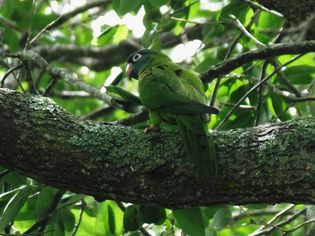
Blue-Crowned Conure (Sharp-Tailed Conure): Bird Species Profile
The blue-crowned conure is classic in many ways, but this medium-sized parrot is slightly quieter a
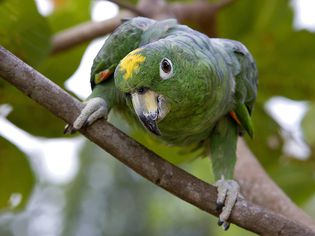
How to Care for a Pet Amazon Parrot
An Amazon parrot is a classification of several different kinds of parrots that hail from Central a

How Do Birds Sleep?
Most animals, including humans, natually lie down on their backs, sides, or even stomachs when they
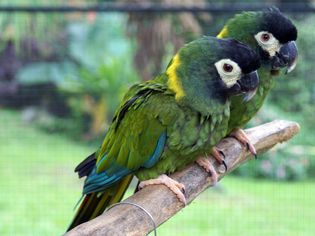
Yellow-Collared Macaw: Bird Species Profile
Charming, crafty, and comical, yellow-collared macaws offer all the personality of a large macaw in
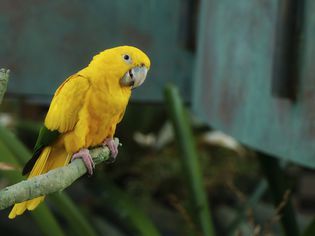
8 Top Yellow Parrots to Keep as Pets
When people think of yellow birds, canaries often come to mind. But there are many beautiful parrot
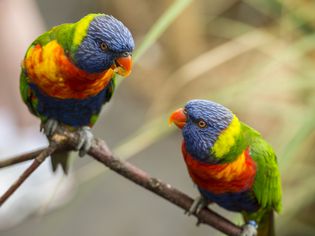
8 Top Brightly Colored Pet Birds
Although parrots and other pet birds come in pretty much every color of the rainbow, most sport onl
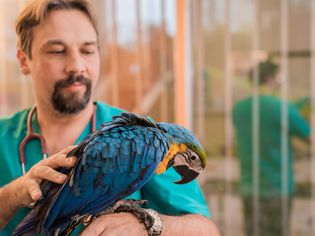
5 Signs Mean Your Bird May Be Sick or in Pain
While it's true that some birds are able to "talk," they aren't able to tell their owners if they a
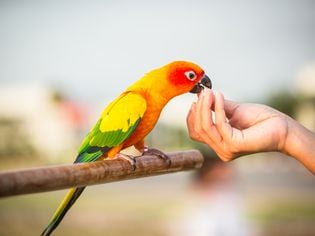
Keeping Wild Birds as Pets
Attempting to keep a wild bird as a pet is a questionable idea in the vast majority of cases, and d
About WhiskerClub
We are a premier digital platform committed to delivering high-quality content to our readers. Our mission is to provide accurate, reliable, and engaging information that adds value to our audience's daily lives.
Our team consists of experienced content creators and subject matter experts who uphold the highest standards of professionalism. In an era of information overload, we curate content with care, ensuring our users receive only the most relevant and trustworthy information.
Beyond just reporting facts, we focus on depth and context. Through expert analysis, comprehensive research, and clear presentation, we help our audience gain meaningful insights and make informed decisions.
We take pride in being a trusted information source for our growing community of readers. Our user-first approach means we continuously adapt to provide content that meets our audience's evolving needs and interests.
Innovation and excellence drive everything we do. We're committed to improving our platform and services to deliver the best possible experience for our users.

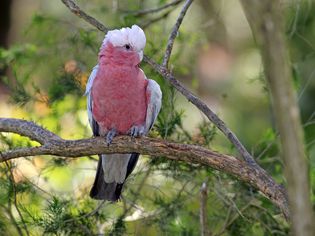
Comments on " Galah (Rose-Breasted) Cockatoo: Bird Species Profile" :